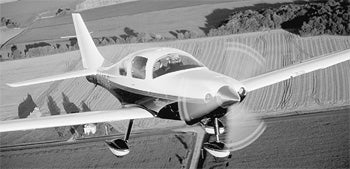 |
| STANDARD DATA: (Columbia 300/350) Seats 4. Gross wt. 3,400. Empty wt. 2,300. Fuel capacity 98. Engine 310-hp TCM IO-550-N. PERFORMANCE: Top Speed, 190 KTAS. Cruise 165 KTAS. Stall mph 50. Ceiling 18,000′. Rate of Climb 1,225 fpm. Takeoff roll/50 ft, 1250′. Landing roll/50 ft, 2,350′. Range 1,320 nm. STANDARD DATA: (Columbia 400) Seats 4. Gross wt. 3,600. Empty wt. 2,350. Fuel capacity 98. Engine 310-hp TCM TSIO-550. |
Company founder Lance Neibauer began designing aircraft more like a sculptor than an engineer, carving his signature flowing fuselage designs out of stacks of foam. His resulting kit models quickly garnered a reputation for unmatchable speed and performance. In 1994, Neibauer announced his entry into the certified light aircraft category, the Columbia, which was made entirely of composite fiber materials. Four years later, the FAA awarded type certification to the Columbia 300, now the basis for the Lancair family of four-seat singles. The Columbia 300 was one of the first aircraft to employ large LCD multi-function display screens, and the yoke was replaced by a side-stick control. Perhaps the most remarkable feature was its speed—220 mph despite fixed gear.
The Columbia 350 transformed its predecessor into an all-electric airplane, replacing gyro-driven systems with dual redundant electrical systems to power an all glass cockpit. Dual turbocharging was added in 2004, creating the Columbia 400. That raised the Columbia’s operating envelope up to 25,000′ and delivered 288 mph at FL240, again with the gear down and welded.



